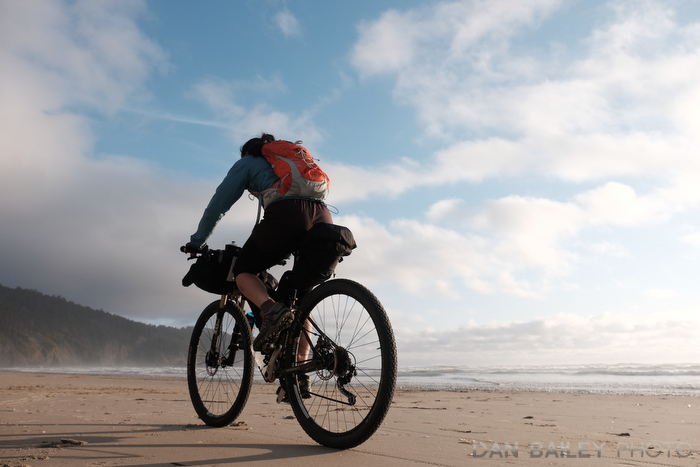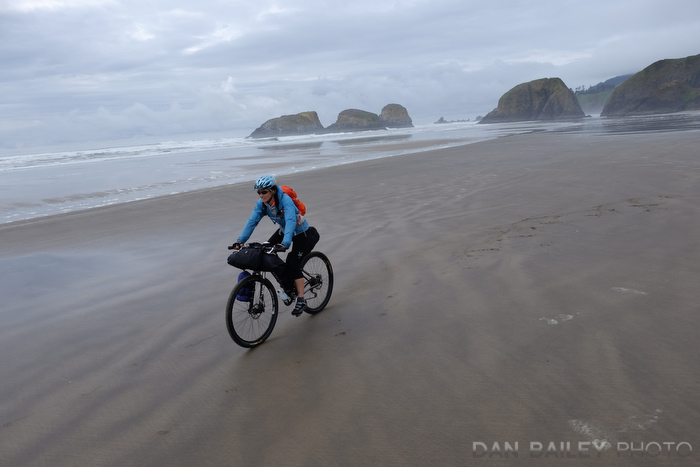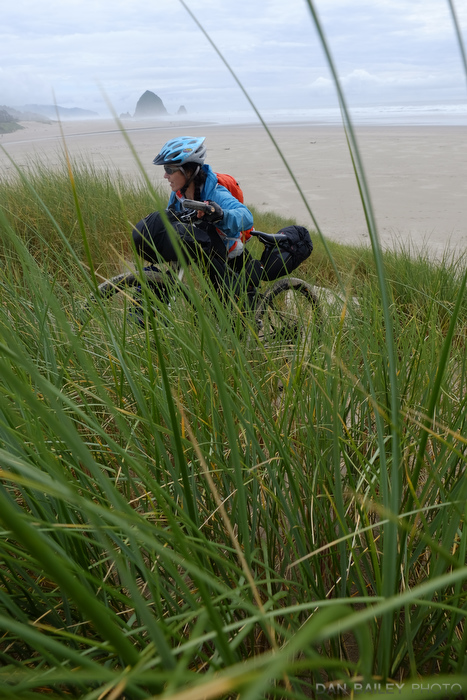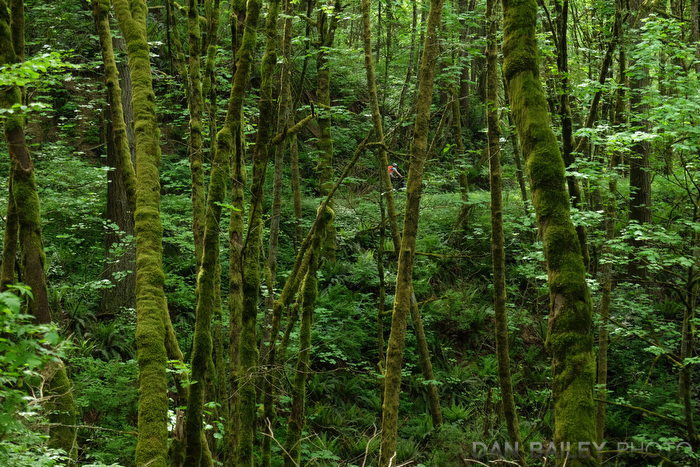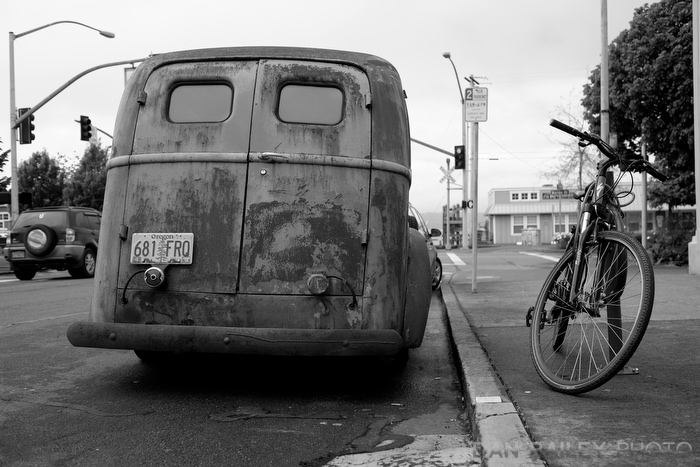While giving a presentation on adventure and outdoor photography the other day at my Anchorage book signing, I showed some photos from my recent Oregon bike trip.
That’s when my friend Nicholas asked me a very good question about vantage points, specifically, how does one achieve non-linear vantage points while biking, when you’re often glued to the road/ground/trail in the same plane as your subject. His comparison related to shooting sports like climbing and skiing, where you’re often on varied terrain and able to move in three dimensions above and below your subject.
I’ll preface to say that Nicholas, who runs a great bike touring blog called Gypsy By Trade, is a very well oiled bike traveler and a very creative photographer, so I really took his question to heart.
In fact, I found it to be quite timely and very relevant, because it’s an issue that I’ve been struggling with lately. Although I’ve shot a lot of biking and bike touring over the years, I don’t want to repeat myself and always shoot the same kinds of photos every single trip. With the mindset to keep improving and expanding my style, how do I keep a fresh look and make sure I’m not shooting my scenes in the same way I always have in the past?
Here are a few techniques that I practice. None of these are groundbreakingly original, you just have to apply them in different ways depending on the activity your shooting. You can probably apply them to just about any subject matter. It just takes a little practice and remembering when you’re out on location.
1. Move Around
One way I vary things is to get off the bike when I can, even for just a few seconds. This allows me to get down low or quickly run to a nearby spot that might present a good viewpoint before my subject comes riding by me.
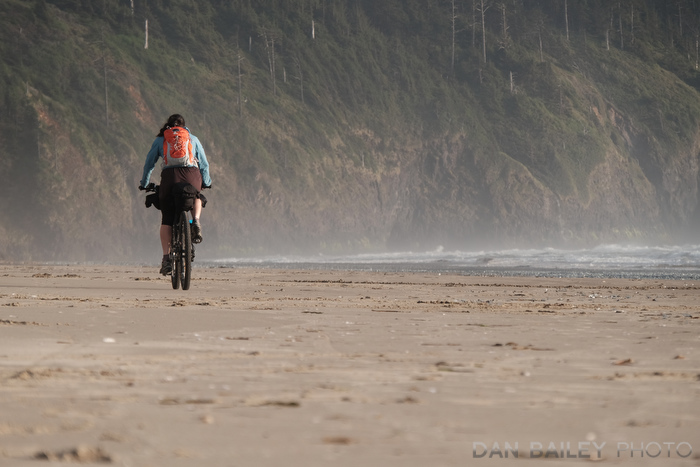 2. Hold the Camera In a Different Way
2. Hold the Camera In a Different Way
With mirrorless cameras, I’m able to hold the camera out next to me and shoot across the scene while I’m riding, or even hold it high above my head. Even a slight elevation in camera angle can make an appealing difference.
Using the tilt LCD screen and a wide angle makes this technique a little easier. That said, keep in mind that shooting with one hand while riding bikes, or doing any kind of sport takes practice. I’ve wiped out doing this, but I always manage to save the camera.
3. Change Lenses
Another good way to vary your looks is to change lenses. It’s not always easy to swap glass when you’re moving, so often times I’ll just switch and ride for awhile with a different lens and see what I get. Both the Fuji X-T1 and X-T10 are light enough to ride with the camera slung around my shoulder, if it’s not too technical.
This is where small primes work well. I like the XF 14mm f/2.8, the XF 23mm f/1.4 R lens and the tiny XF 27mm f/2.8 pancake; those are all pretty lightweight. I also like the XF 18-135mm lens, although it’s a little heavier, it gives me more options. It’s still light enough that I can ride and shoot one-handed with this lens if it’s not too technical.
4. Look for Different Angles
A little creativity goes a long way here. It’s so easy to shoot the same thing over and over again, especially if it’s a technique that’s worked in the past. Try varying how you see the scene and look for different angles, color schemes and abbreviations.
5. Look for Compelling Backgrounds and Settings
This is a staple technique for all adventure and travel photographers. We’re always looking for really cool backgrounds where we can place our subjects and juxtapose them against the amazing beauty of the the natural world.
When you find a really cool location, work it. Put on a long lens and pull that background in close so that it creates a dramatic backdrop for your subject. Shoot wide and show them as a little person in the really cool world. After all, adventure photography isn’t really about the person, it’s about the world and how they relate with it.
6. Shoot the Other Details of Your Adventure
Adventure isn’t just about the sport itself, it’s about travel, seeing new places, meeting new people and focusing on the landscapes and specific details that excite you about the locations you visit. No matter what mode of travel your adventure revolves around, there are a multitude of wonderful things to photograph during the “down time” and when you’re simply off exploring the sights, even if they’re not “adventure subjects.”
After all, photography is about experimenting, pushing your creativity and capturing those little things that excite you about the world. Remember, your story is so much more compelling if you add more flavor.
If you’re looking for some new ideas to shake up your photography, check out my eBook ZEN PHOTOGRAPHER, it offers a variety of different creative and ideas, essays and approaches that go further than just a list of quick tips.

